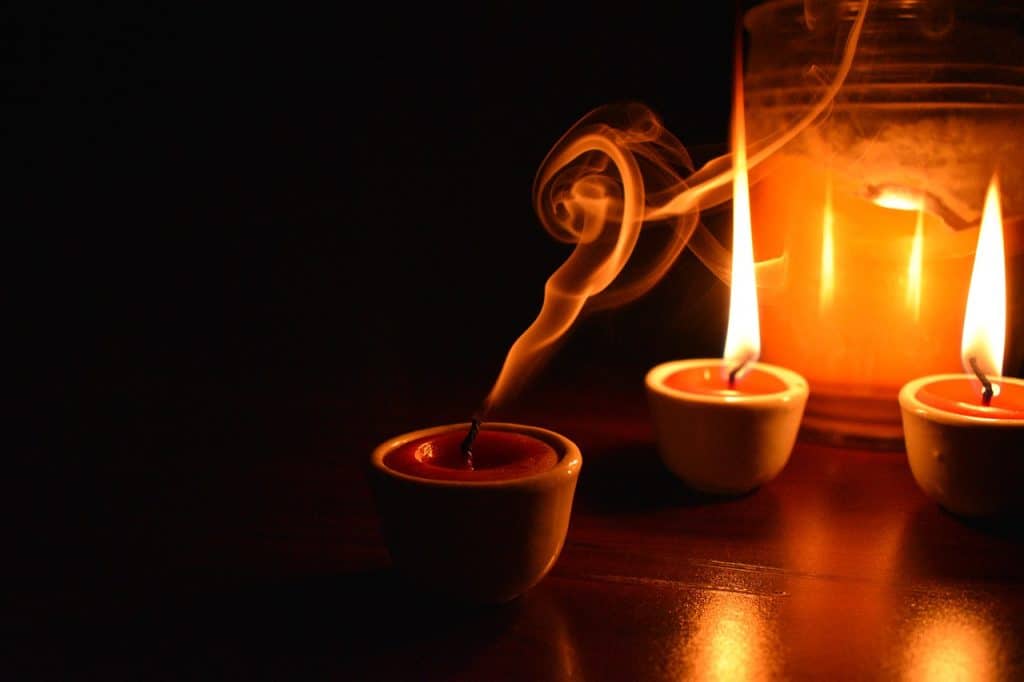Candles are a source of illumination, and now, since the invention of electric bulbs, the use of candles has somewhat reduced. But Candles used mixed with fragrance and are now used to make the houses or workplace fragrant. The candles are made of wax as we all, but the thing we don’t know is that the wax used to make candles varies, and the use of a particular wax changes the properties of candles like duration of burning, the extent of manipulation, and also affects the price.
Today, we will be talking about these different types of waxes. We will talk about the composition and properties in detail, and we will also discuss how a certain kind of wax affects candles and candle making.
Beeswax
The first type of wax is beeswax. It is formed by the worker bees, and they use it to form cells in their hives where they store honey and newborns. It is composed of esters of fatty acids. It has been used prehistorically used in various processes.
Now we will take a meticulous look at the benefits of beeswax candles. Just to clarify, no bees are harmed while harvesting of the beeswax, making it a 100 per cruelty-free process.
Coming towards the beeswax candles, they are perfect for the job. They have a mild honey scent which only adds to the reason as to why they are highly sought after than the other types of candles. The second plus point for these candles is that they do not release any harmful chemicals. Furthermore, the beeswax candles release negative ions that remove dust, molds.
They can be particularly good for asthmatic patients and patients with allergies. Thirdly they do not drip, which makes much less mess than the other candles, and the light produced by these waxes are very pure and as close to sunlight as a candle can get.
Beeswax is extremely easy to work on. Beeswax is sold in sheets that have already been bleached, so you don’t have to. Now, all you have to do is melt it, put it in the moulds, and, when it cools down, voila !! You don’t have to bother with any kind of fragrance to it; as mentioned before, it has its own natural honey-flavored scent.
One thing that must be known is a process called blooming. You might notice a fine white powder on your candle, and it is believed as a popular myth that the candle is not good anymore. It is not true. It is a very natural process, and you can easily remove the white powder. This process actually shows that the candle you bought is 100 percent natural beeswax.
But it takes a visit to countless flowers and countless bees to make a pound of this wax, and with the bees now on the endangered list due to the reduction of open fields and industrialization, beeswax is hard to get, and this jacks up the price of these candles. Also, if you wish to add a fragrance into a beeswax candle, it is pretty difficult, and you might learn to eventually learn the craft after many failed batches.
Soy wax:
Now the next type that we will discuss is the candles made out of soy wax. But before we head on the weighing the pros and cons of the soy wax candle, we must know about the soy wax. It is extracted from the soy plant. After the beans have been removed, they are used to extracted soy oil, and waxed is extracted later on.
The first positive is that the soy is extracted from plants, and it is very environment-friendly. It does not emit soot but burns clear. It is 100 percent nontoxic. And second big yes in favor of the soy wax is that it is an excellent carrier of the fragrance.
Soy wax is very easy to work with and requires no additional additives to enhance the fragrance carrying capacity. It burns longer, and the cause of this longevity is that they have a cooler burning temperature. And the most important point in favor of these types of candles is that they are cost-effective and take a lot of time to burn out.
They can be easily made in homes. All you got to do is buy the soy wax and then melt it add some fragrant oils and then you have to pour it in moulds and then add the wick and let it cool. And there you have it, a soy candle.
But all that has been said in favor of these candles, we have to look at the downsides of soy wax in candles. The first downside is that because they are 100 percent natural, they tend to shrink or expand according to the temperature. They should be kept at a warmer temperature because they shrink in the cold.
Next is that they might be good when mixed with different fragrances, but they are not good with some of them. They can be remedied only by the hit and trial method. So make sure you test the candles you make at home before you launch them. Another negative is that they get fuzzy in humidity.
Paraffin Wax
The third type of wax that we will now discuss is paraffin wax. Paraffin, if you guys don’t know, is obtained from petroleum. Now paraffin wax is very nontoxic; it is nonreactive and forms a perfect water barrier. And is also colorless. It has been used in the candle industry for the longest of time. It has been used because it is cheap. The second is that it has the ability to carry loads of fragrance. It is not molecularly dense, and this gives it the ability of a greater fragrance throw.
It is also quite simple to make paraffin wax candles at home. All you have to do is buy paraffin, which is abundantly available at any shop and very cheap. All you need to do is melt the wax, add color and fragrances and then mold and cool.
About the negatives of these candles, they produce soot, which is not good for your respiratory system. Also, the constant burning of paraffin candles at a same point blacked the surrounding walls. But there are some people who are very pro paraffin, and they say that the toxin released by these candles is actually minimal, that they pose no threat of any kind. Also, their downside includes a rapid speed of burning. They also have a tendency to drip, and this only adds to their mess.
Here I have tried to list all the benefits and demerits of the waxes used in candle making. You will find this information very useful either you are a person who is getting into candle making business at home or a customer you are looking to buy candles but wants to know what he/she is buying or investing in.
Let’s now have a look at how can we make our candles burn for longer hours. (INTERNAL LINKING TO PREVIOUS ARTICLE)
How to make your candle burn for longer hours?
You can easily increase the burn time of your candle. The burn time of a candle depends on multiple factors like candle size, type of wax and wick, length of the wick, etc., which help determine how long the candle will burn. Candles with a smaller wick have a longer burn rate per ounce than the larger wicks.
The soy wax candle with trimmed wick lasts 30% longer than the regular paraffin wax candle. An important factor responsible for the longer burning time in soy wax candles is that the candles burn gradually at a cooler temperature with a small flame. The wax molecules have low volatility that reduces the flow of melted wax through the wick. This results in a longer burn time as compared to the traditional candles.
Other factors involved are the placement of the candle, concentration of oxygen in the air, and temperature variance. The knowledge of the burn time of any candle would help better understand how long will it burn.
Variables that can increase the time your candle burns
Taking care of a few other things can significantly increase your candle’s burn time and shelf life. Consider the following factors to increase the burn time of your candle
- Trim its wick every few hours to ¼ inch with a scissor or a specialized wick trimmer. It creates a steady flame and lengthens the life of the candle by 25%.
Longer wicks result in uneven burning or sooting that would leave a dark streak inside the container.
- Remove any debris from the wax pool. This provides fuel to the candle and causes flaring. The wax pool around the wick determines how long the candle will burn. Never burn your 3-inch candle for more than three hours. Allow it to cool and relight the candle after at least two hours.
- Longer burning leads to mushrooming of the wick- the carbon collects on the wick. This produces smoke and soot.
- Burning a new candle for at least three to four hours allows it to melt evenly to the edges. This also prevents the tunneling (a hole in the center) of the candle by setting a burn memory.
- Keep your candles, particularly the scented candles, away from the window, trafficked area, and direct sunlight in a cool, dry place.



